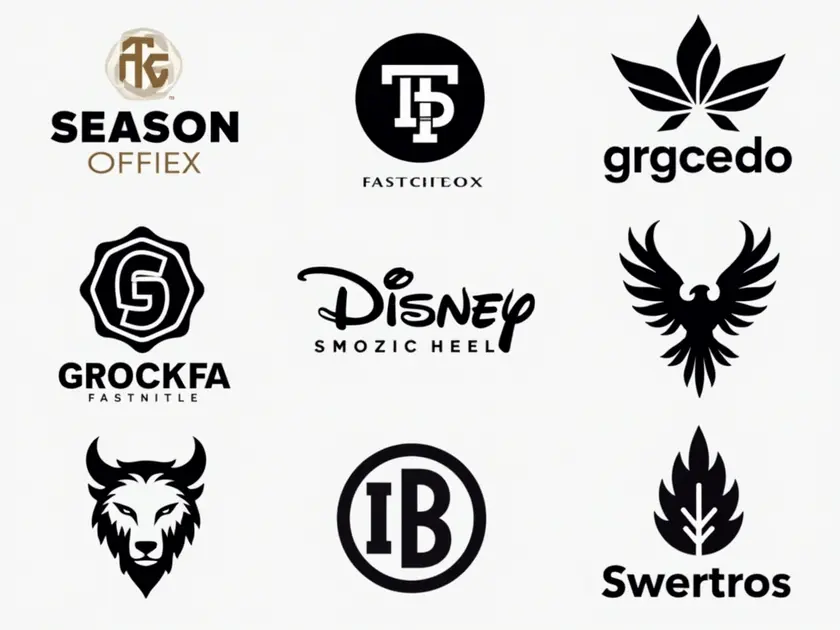The Art of Designing Effective Logos
Designing a logo is more than just creating a visual symbol for a brand; it is about crafting a powerful identity that resonates with the target audience. A well-designed logo can leave a lasting impression, communicate the essence of a brand, and differentiate it from competitors. In this article, we will explore the key elements to consider in logo design, delve into the psychology behind color choices, and provide tips for creating memorable and versatile logos. Join us on this journey to uncover the art and science behind crafting effective logos.
Key Elements to Consider in Logo Design
When designing a logo, there are several key elements that need to be carefully considered to ensure its effectiveness and success.
Simplicity
A simple logo is often more memorable and versatile. Avoid clutter and unnecessary elements that can detract from the overall impact.
Relevance
Make sure your logo is relevant to your brand and conveys the right message to your target audience. It should reflect your company’s values and identity.
Memorability
A memorable logo is crucial for brand recognition. Aim for a design that is unique and stands out in the minds of consumers.
Timelessness
Consider creating a logo that will stand the test of time. Avoid trends that may quickly become outdated, and opt for a design that can remain relevant for years to come.
Versatility
Your logo should be versatile enough to work across various platforms and mediums, from digital to print. It should look good in different sizes and color variations.
Uniqueness
Strive to create a logo that sets your brand apart from competitors. A unique design can help differentiate your business and make a lasting impression.
Scalability
Ensure that your logo can be scaled up or down without losing its visual impact. It should be recognizable whether displayed on a billboard or a business card.
The Psychology Behind Color Choices in Logos
Color choices in logos play a crucial role in conveying the right message to the audience. Different colors evoke specific emotions and perceptions, which can significantly impact brand recognition and consumer behavior.
The Impact of Color on Perception
- Red: Often associated with energy, passion, and excitement. It can create a sense of urgency and stimulate appetite.
- Blue: Symbolizes trust, security, and professionalism. It is commonly used by corporate brands to convey reliability.
- Yellow: Represents optimism, warmth, and clarity. It can grab attention and promote feelings of happiness.
- Green: Linked to nature, growth, and harmony. It is often used by brands that want to showcase sustainability and eco-friendliness.
- Black: Signifies sophistication, luxury, and authority. It can create a sense of elegance and timelessness.
- White: Symbolizes purity, simplicity, and cleanliness. It is commonly used to convey a minimalist and modern aesthetic.
Color Combinations and Brand Identity
Choosing the right color combinations for a logo is essential for establishing a strong brand identity. The use of complementary colors can create visual harmony, while contrasting colors can make a logo stand out and be memorable.
Understanding the psychological effects of colors can help designers make informed decisions when creating logos that resonate with the target audience and effectively communicate the brand’s values and personality.
Tips for Creating Memorable and Versatile Logos
1. Keep it Simple:
- Focus on a clean and uncluttered design
- Avoid using too many colors or intricate details
2. Make it Timeless:
- Avoid trends that may quickly become outdated
- Choose classic fonts and shapes that can stand the test of time
3. Be Unique:
- Create a logo that sets your brand apart from competitors
- Avoid clichés and generic symbols
4. Consider Versatility:
- Ensure your logo looks good in different sizes and formats
- Test how it appears in black and white as well as color
5. Think About Scalability:
- Design a logo that can be easily scaled up or down without losing quality
- Consider how it will appear on various marketing materials and platforms
6. Get Feedback:
- Solicit input from colleagues, clients, and target audience
- Use feedback to refine and improve your logo design






